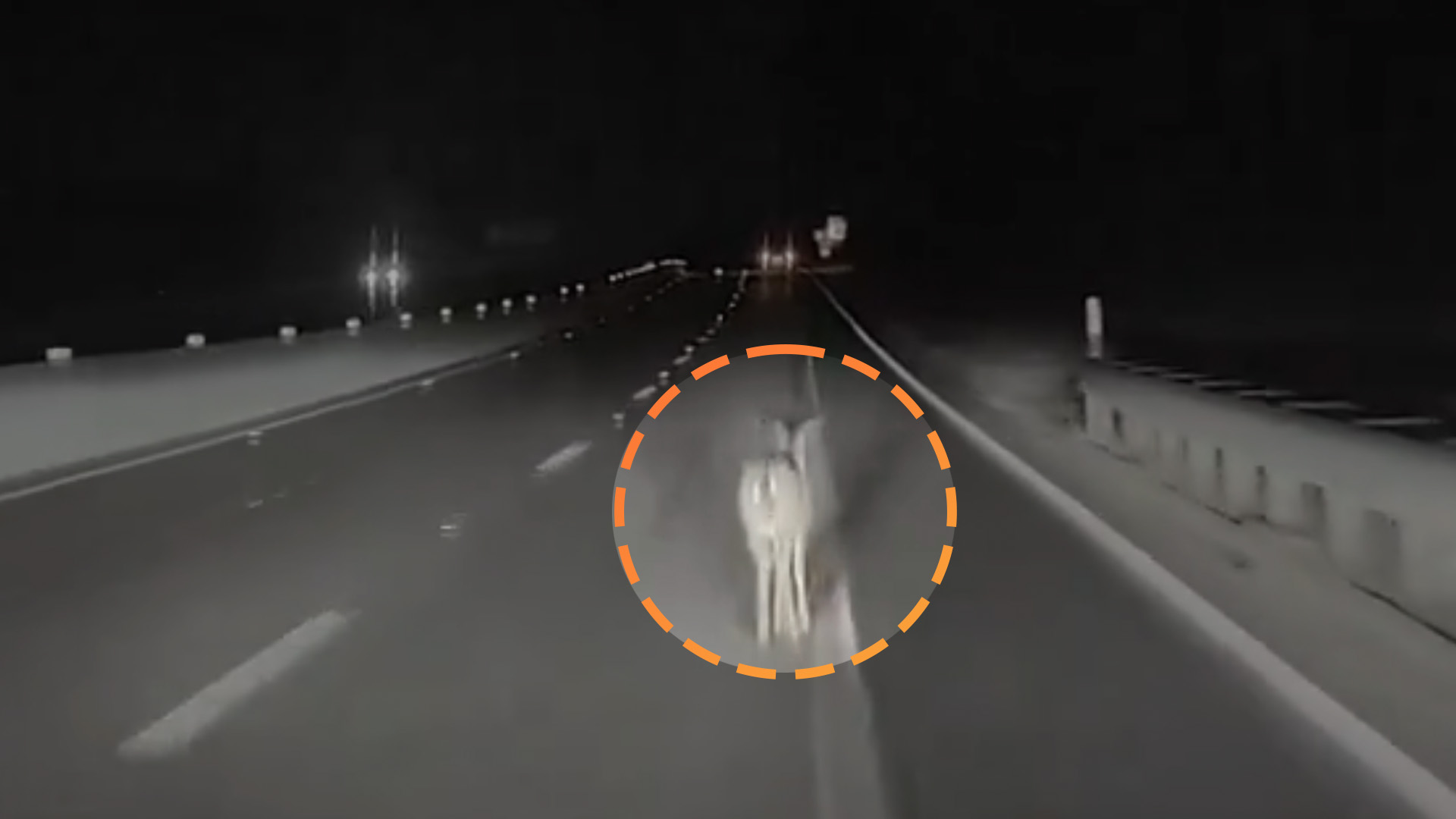

It can be tough to avoid deer in the road. Sometimes, they’ll leap into your path at the last second, giving you very little time to react. Other times, you’ll come up on a deer just chilling in the way, and there’s plenty of room to slowly come to a stop, or steer around them. Unless you’re relying on Tesla’s “Full Self-Driving” system, in which case, your car might just roll on through without a care.
An X user going by the handle Paul S posted a video to the platform from the dashcam of his Tesla Model 3, showing him hitting a deer while Full Self-Driving was active, as CleanTechnica first reported. Paul says he was using Full Self-Driving where it’s supposed to be used: on a clearly marked highway, with very few other cars around. Admittedly, he was using it at night, when Tesla’s entirely camera-dependent driver assistance system can struggle to see if the road isn’t well-lit. However, the road—and the deer on it—appeared to be sufficiently lit by the EV’s headlights.
Video is cut right before sensitive things appear on screen. Safe to watch. pic.twitter.com/FaXD6Gr68S
— Paul S (@TheSeekerOf42) October 28, 2024
Things go wrong seven seconds into the video when a deer is seen standing still in the middle of Paul’s lane. (The video cuts just before the impact happens.) The deer didn’t jump out from the side of the road—it was just standing there, looking around. Even still, the Tesla just plows through it as if it wasn’t there. There was no braking, no swerving, no alerts; The Model 3 just ran the deer down and, per the owner, didn’t come to a stop on its own even after the impact.
It’s unclear why the Full Self-Driving system made no effort to avoid the deer. It could have something to do with reduced visibility at night, or because Tesla’s image recognition is just simply poor at identifying deer. Either way, it’s damning. While the car held up well in the crash, with reportedly minimal damage to the front bumper and windshield, it could’ve been much worse if the deer was larger—or, for that matter, if it was something other than a deer. Like a person. It’s worth noting that Tesla’s Full Self-Driving system is purely vision-based, without any of the sensors, lidar equipment, or mapping data that some of its competitors use, like GM with SuperCruise. Perhaps sensors might’ve detected the deer, even if the cameras couldn’t see it.
Hit the deer with my Tesla.
— Paul S (@TheSeekerOf42) October 28, 2024
FSD didn’t stopped, even after hitting the deer on full speed. Huge surprise after getting a dozen of false stops every day!
Experiencing worst side of Tesla service now. Can’t even get an estimate for insurance. Nearest appointments only in January. pic.twitter.com/7PMiROmk5x
There’s another issue here, though: In the recording, there’s no human intervention. Based on how the video is cut, we don’t know what happens after the collision. Before it, though, Paul might’ve been able to avoid the deer if he’d been paying attention, either by braking or steering. You would’ve seen at least some twitchiness leading up to the crash, had a human been in control.
Tesla could argue that this was a “perfect storm” scenario: a small deer, in the middle of a lane at night, on a poorly lit road. But if Full Self-Driving can’t guarantee safety in such conditions, the car should block the system’s usage until proper conditions are met. Let this be yet another reminder that even the most advanced driver assistance systems are just that—for driver assistance. They exist to make the task of driving easier or safer, not replace a human altogether.
Got tips? Send ’em to tips@thedrive.com